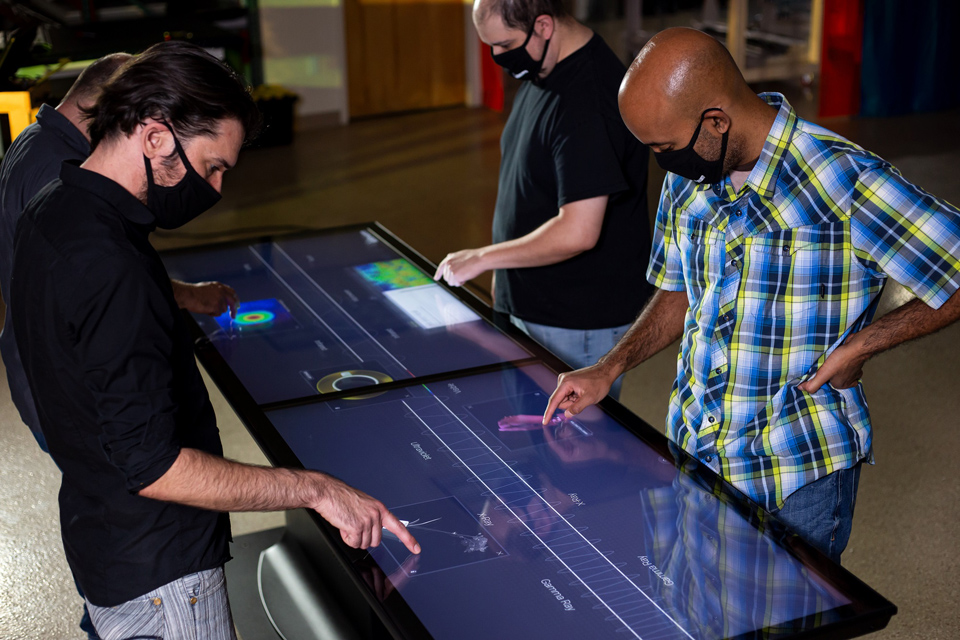Zytronic announces its patented multitouch projected capacitive technology (MPCT™) has been selected by the internationally renowned designer of creative public installations, Ideum, for its next-generation Pano Duo 49-inch interactive touch table.
One of the first deployments is at the Röntgen Museum in Remscheid, Germany, where visitors can view and interact with both terrestrial and celestial objects and learn about the different wavelengths of the electromagnetic spectrum.
The crucial difference between the first generation Pano Duo 49-inch table and Ideum’s new one is the transition from an infrared touch frame to Zytronic’s all-glass printed ZyBrid® multitouch sensor. This significant change in sensor technologies brings a host of benefits. Most importantly, the interactive table has no bezel around the edges, making for a sleek, easy clean, and modern appearance. The projected capacitive technology also helps simplify Ideum’s design process by enabling them to use their patented extrusion style construction, which they use for the vast majority of their rugged, yet elegant builds.
This spectacular table is over 2m long and enables multiple users to interact with the content. It connects two 49-inch commercial-grade LG UHD displays mounted end-to-end, and overlain by a single, stretched Zytronic ZyBrid® sensor fitted with its proprietary ZXY500™ multitouch controller, and linked to a high-performance PC housed in the table’s base. Overall, the active touch area of the table is almost 90 inches (2.25m diagonal) and large enough to comfortably support up to eight people interacting with it simultaneously.
The ZXY500 controller can register up to 100 independent touchpoints with millisecond quick touch response. Together with Zytronic’s customized touch sensor manufacturing capability, it was the ideal solution to enable Ideum to deliver a compelling, collaborative multi-user experience. It has the same interactive features, quality, and performance as a smartphone, but on a far larger and significantly more durable scale.
The projected capacitive sensor and controller also support Ideum’s proprietary Tangible Engine object recognition software. Using this technology, the Pano Dual 49-inch table enables visitors to place a specially designed physical object that represents a chosen product on the touch table’s surface. Once placed, the user can then move the object and open interactive menus showing additional information about the product or exhibit.

Besides the table installation, in the future, Ideum will wall-mount a further two of the Pano Dual displays to create a new educational exhibit. The touchscreens elongated form factor is perfect for displaying wide format content such as timelines, and with the multiple touchpoints, several visitors can interact with the content simultaneously.
Ideum also provided its EM (electromagnetic) Spectrum software application, developed specifically for the Pano tables, which now features in their touchscreen installations in museums, planetariums, and other informal educational institutions around the world.
At the Röntgen Museum, which named after Wilhelm Röntgen, the discoverer of X-rays and recipient of the first Nobel Prize for Physics, visitors can learn more about gamma rays, X-rays, ultraviolet radiation, visible light, infrared radiation, and radio waves, and how each wavelength is imaged.
For more information about Zytronic’s multitouch sensor technology, visit www.zytronic.co.uk/technology/multi-touch/.










